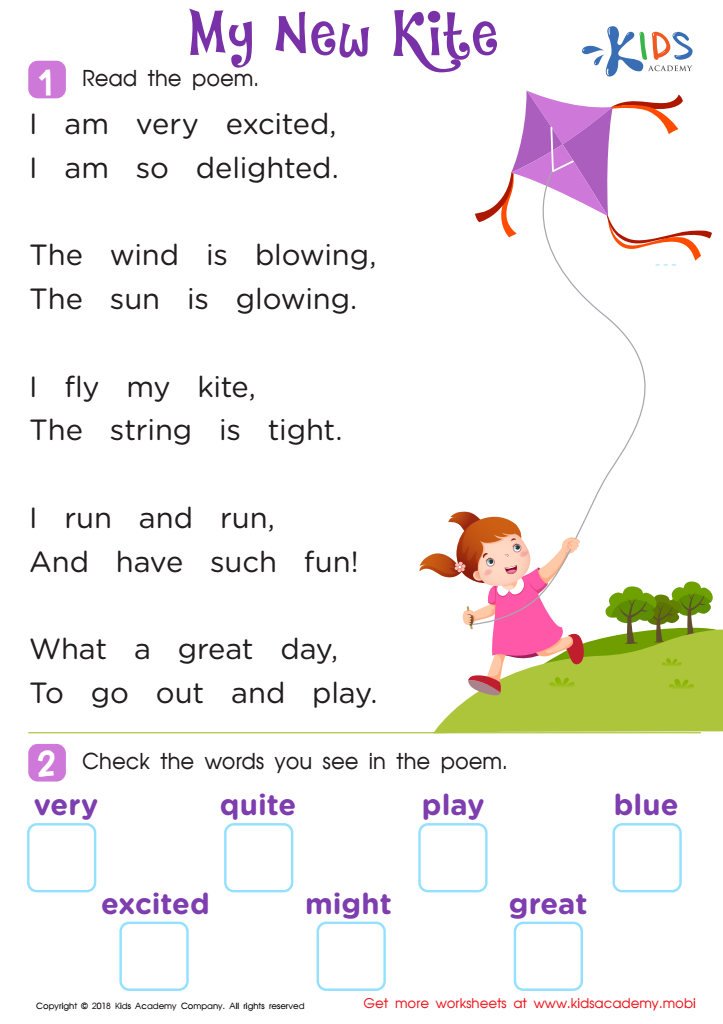Normal Poems worksheets activities for Ages 5-6
5 filtered results
-
From - To


Poem: My New Kite Worksheet


Identifying Poems Worksheet


Poem or Story Book? Worksheet


Rhyming Words in Poems Worksheet


Finish Rhyming Poem Worksheet
Normal Poems worksheets activities serve as a crucial component in the educational process, especially in enhancing students' literary skills and fostering a profound appreciation for poetry. These activities are not only instrumental in developing a keen understanding of poetic devices, forms, and themes but also play a significant role in improving critical thinking and analytical skills among learners.
Firstly, Normal Poems worksheets activities are designed to introduce students to a wide range of poems, spanning different periods, cultures, and styles. This exposure is essential for cultivating a diverse literary palate and for understanding the evolution of poetry through time. By engaging with various poems, students learn to identify and appreciate the nuances of language, tone, and rhythm that make each poem unique.
Moreover, these activities encourage students to delve deeper into the text, analyzing metaphors, similes, personification, and other literary devices poets use to convey their messages. Such analysis is crucial for developing critical thinking skills, as students learn to interpret meaning beyond the surface level and consider the broader implications of a poet's work.
Additionally, Normal Poems worksheets activities often include creative writing prompts, encouraging students to craft their own poems. This is a valuable exercise in self-expression and creativity, allowing students to experiment with language and explore their own emotions and experiences through poetry. It also helps students to understand the creative process behind poetry, fostering empathy and a deeper appreciation for the art form.
Furthermore, these activities facilitate discussions and collaborative learning among students, promoting a shared understanding and appreciation of poetry. Through group activities and discussions, students can share their interpretations, offer critiques, and gain new insights from their peers.
In conclusion, Normal Poems worksheets activities are an indispensable tool in the literary education of students. They not only aid in the comprehension and appreciation of poetry but also contribute significantly to the development of critical thinking, analytical skills, and creative expression. By engaging with poetry through these activities, students are better equipped to navigate the complexities of language and literature, enriching their educational journey and personal growth.
 Assign to the classroom
Assign to the classroom











